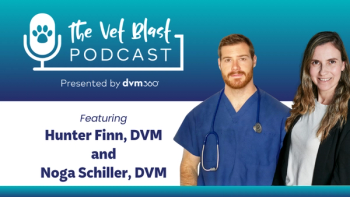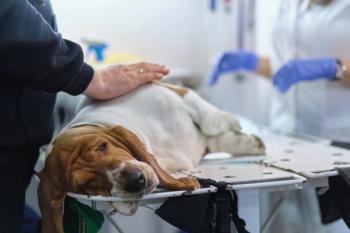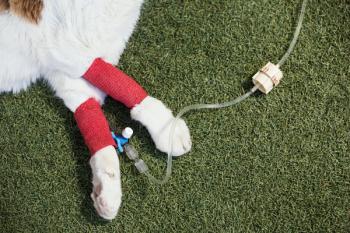
A radical guide to diagnostic dental radiographs
How to take better dental radiographs and explain to clients the importance of the dental preventive care, diagnostics and treatments you and your fantastic veterinary team provide every day.
Resources
Download these handouts and tools before your team meeting:
•
•
•
•
•
Welcome to Firstline's Team Training in a Virtual Box, your complete guide to team training. Today your team will learn how to take better dental radiographs and explain to clients the importance of the dental preventive care, diagnostics and treatments you and your veterinary team provide every day. The first part of this meeting is heavy on the clinical techniques for great dental radiographs, so you may or may not want to include your entire team (including your client service representative superstars) on that part. You never know, though: They might be impressed as heck by how much work you and your clinical team really put into pets' dental pictures!
Let's get started.
25-MINUTE ACTIVITY
It's raining cats' and dogs'... dental radiographs!
OK, intrepid team meeting leader! Things are about to get technical. (Later, we get into some nice client education for all team members.) A registered technician or veterinarian should probably watch the video below and read the outline a few times before you present the information to your entire medical team. You'll want to anticipate their questions by comparing how radiographs are taken now and whether any of the differences might be fantastic tweaks to get better or more efficient radiographs in the future.
Who's the video star here? Mary Berg, RVT, RLATG, VTS (dentistry), has been teaching veterinary technicians how to take dental radiographs for more than 20 years, and in the video, she shares her practiced techniques for each tooth for cats and dogs.
We've provided you with a broad written outline in this team meeting for the roughly 12-minute video, where Berg shows off the techniques. Offer the outline for team members to follow as they watch the video.
Team meeting leader warning: Stop for questions! Go back and rewatch something if everyone gets confused or needs to see Berg do it one more time. Let the truly technically nerdy among you whip out their veterinary technician textbooks or favorite dentistry textbooks and help ask good questions and answer them. And pass out the “Guide to diagnostic radiographs outline” as a cheat sheet for technicians to follow along as they watch.
7-MINUTE ACTIVITY:
Navigating dental radiography orientation
Once you're taking fantastic dental radiographs, the next step to make it useful for doctors and technicians is, of course, orienting yourself properly to the image taken.
While many digital radiography platforms allow you to select the tooth you're imaging and then have the software label which tooth is shown, being able to visually figure it out is an important skill.
Watch the short under-three-minute video below, with quick tips from Mary Berg, RVT, VTS (dentistry), on figuring out which way is up in dental imaging.
5-MINUTE ACTIVITY:
Showing clients where it hurts
Your team is probably raring to try out their new dental radiography techniques on real cats and dogs, but not so fast. Before anyone gets to take better radiographs of clients' pets, guess who needs to believe in the value of paying for all those great views? That's right: the clients.
Your quickest path to compliance may be client education. Once pet owners believe their pets may be in pain, they may be more likely to seek your help in dental preventive care, diagnostics and treatments. Use a client handout to start a productive dental conversation with clients.
Pass around copies of the client handout “
Do you think your explanation and your responses to skeptical questions from your discussion partner would work well in the exam room? Did you talk too fast? (Slow down a little.) Did you use medical jargon? (Don't.) Were you ready to really show the client where bad breath, bleeding or discomfort is coming from in a pet's mouth? If a picture's worth a thousand words, imagine what your pointing out problems in the exam room is worth!
Bonus: There's even a pitch for folks to brush their pets' teeth! If you're inspired, check out the photo-filled client handout “
5-MINUTE ACTIVITY:
Sharing your great work with clients
If you were going to spend a lot of money in a veterinary practice for a dental prophylaxis or procedure for your dog (or cat) under anesthetic, would you want a fun, friendly, informative way to understand what's going to happen before, during and after?
Yes, you would.
So we made a sample handout you could give to, say, a dog owner, which you could offer as info for anyone thinking about a dental procedure with anesthetic. Or you could use it for inspiration to personalize handouts for each and every client and patient every time. Let's take a look!
Pass around copies of the client handout “
Pet owners will judge whether all the time, effort and money they spent on a visit to your practice was really worth it. Make sure everyone on the team helps reinforce the good story-like “Dandy's Day at the Dentist”-of preparation, treatment and diagnostics, and necessary after-care tips.
Thank your team for taking the time to learn more about the importance of dental radiographs. Now you're armed to help clients see the value of this diagnostic tool.
Newsletter
From exam room tips to practice management insights, get trusted veterinary news delivered straight to your inbox—subscribe to dvm360.



